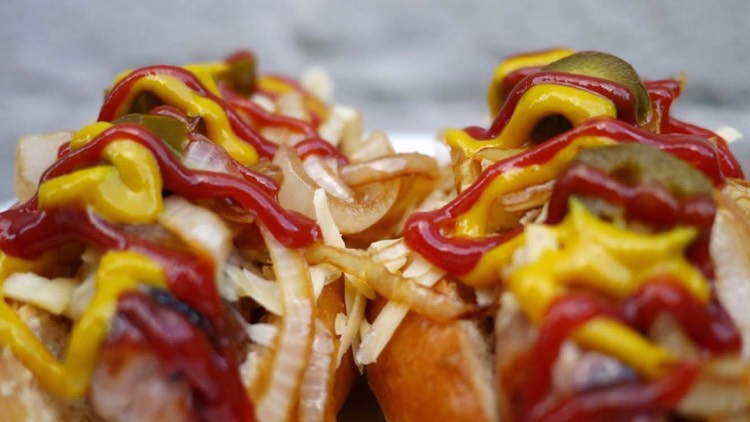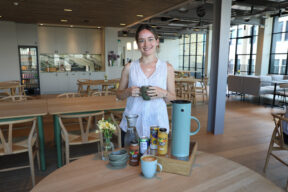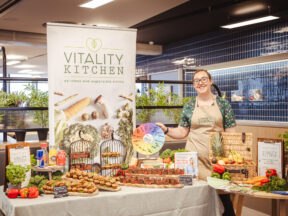Blogs
The rise of the street food scene

The phenomenal rise of the street food scene over the last few years has taken London by storm. From the juicy burgers of Mother Flipper, made from chuck steak and cooked medium only, served with maple fried bacon on a half brioche roll with all the trimmings, to the outstanding Breddos Tacos and their slow cooked short rib soft tacos, this is serious street food. There are now companies such as Kerb and Street Feast involved in bringing together and organising various high quality vendors, arranging mini food festivals all around the city on just about every day of the week.
Long gone are the days when street food meant greasy sausages and over fried onions from dodgy and often illegal vendors trading in the West End. Of course that option is still available, if you’re drunk enough, but if you’re after something a little more palatable, the choices are impressive. There’s also a move from the “fairground” style trucks with extensive menus of 20 or more items. What we see now is the emergence of single product specialists.
This new breed for vendors dedicate themselves to an ethos of authenticity and absolute quality, developing every element of their dish, from farm to fork, to ensure it is a faultless replication of an authentic classic or something truly unique. There is no room for generic dishes here. This focus delivers a new standard in quality that is now a wakeup call to the restaurant industry and, for the first time in the years, the small guys are leading the way.
Top London restaurants, trying to keep pace, or rapidly moving to less formal environments and menus, losing the tablecloths and trying to create “posh” hotdogs, burgers and street food in their own right. So popular is the concept that some of the country’s top chefs are getting in on the act. Fish dog is Mark Hix’s take on a classic fish finger sandwich. A giant homemade fish finger, made from sustainable pollock, deep fried and served in a hot dog bun with a choice of minted mushy peas and tartare sauce. After launching at Jamie Oliver’s ‘The Big Feastival’ last summer, the food truck, a 1971 Citroen H van, has been cruising around various London markets, including Brockley market every Saturday.
New companies are coming onto the market every month. With such an overwhelming choice on offer a great introduction is to try one of the organised food tours. Coutours is a company that prides itself on entertaining visitors to London as well as enlightening Londoners.
Founder and MD Emma Parker explains the appeal of the street food tours.
“I have created lots of different tours of London and fancied showing parts of London through its food. I wanted to discuss what the man in the street ate and how these foods shaped London. We think of buying street food or takeaways as being a lazy option but in a city where a lot of people didn’t have kitchens it was a vital part of living. The tours cover the evolution of food, street vendors or costermongers and the recent popularity of street food. I look at the parallels and differences between now and then.”
Emma created the tours herself. She studied history at university, and her background in food and drink PR inspired her passion for new foods, flavours and concepts. She has been running the tours for nine months now and has two to choose from. The south London tour covers Borough and Maltby street markets
“to see and taste in one of the oldest markets and then one of the newest. South London was an area where we stored food in wharfs and warehouses. London Bridge was the only bridge across the river Thames for 17 centuries, so the area around Borough market became a terminus for travellers from the South and overseas. Inns and pubs dominated and we see their link with street food.”
The East End tour specialises in what London does so well. The array of international food and its roots in the various immigrant populations that settled there.
“I am sure most people can name foods for which the East End is famous for, curry, pie ‘n’ mash, jellied eels, but I also reveal other foods which have their roots there and why, including fish and chips, cockles and winkles and beigels.”
Emma does, of course, have her favourites among the stalls she visits. The famous RibMan, with his outdoor reared pork from Norfolk and Suffolk farms gets a special mention. As does Mother Clucker, with their tea brined, buttermilk soaked, twice battered fried chicken from their converted US Army ambulance currently housed in the Truman Brewery. She also has a soft spot for Borough market regular Richard Haward’s the Company Shed.
“I still love Richard Haward’s stall in Borough. I have known Richard for over 30 years as I grew up on an island off the coast of Essex called Mersea. It is famous for oysters. Seasoned oyster lovers and newbies alike think they are delicious and they are often surprised at how amazing they are.”
Summing up the appeal of the street food concept to customers and vendors alike, Emma says.
“Today the sheer amount of choice is amazing and that’s why it’s so popular. You are always waiting for the next new thing. Vendors are getting together as a collective to offer their wares at different sites during the week, one day it might be at the Gherkin; the next at Canary Wharf. Street vendors can make a lot of money with the low overheads and the fast turnover. It’s a win win situation.”
The London food scene has never been more exciting and, with its growing popularity, this trend is now slowly spreading across the nation. Old classics are being rediscovered, British heritage produce is finding its way back to the market, new ingredients continue to cross our shores, and the low cost to enter this market means that small entrepreneurs are finding a way to carve out their own niche in a market previously dominated by the big players and investors. The direction of food is changing, and the UK is leading way!
Leigh-ann Gautreaux





